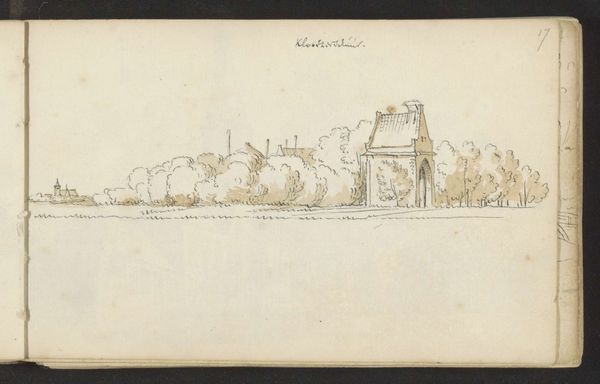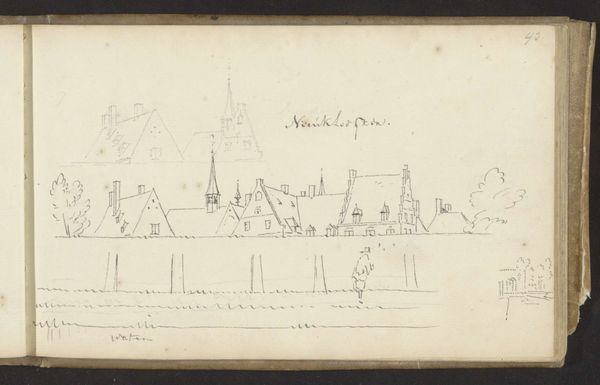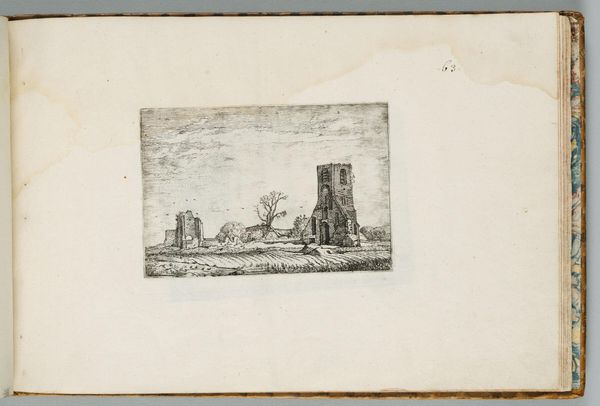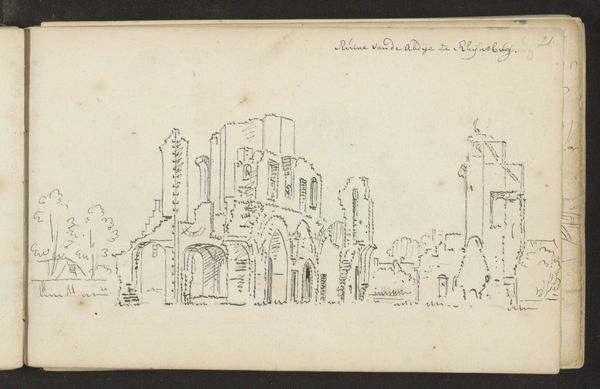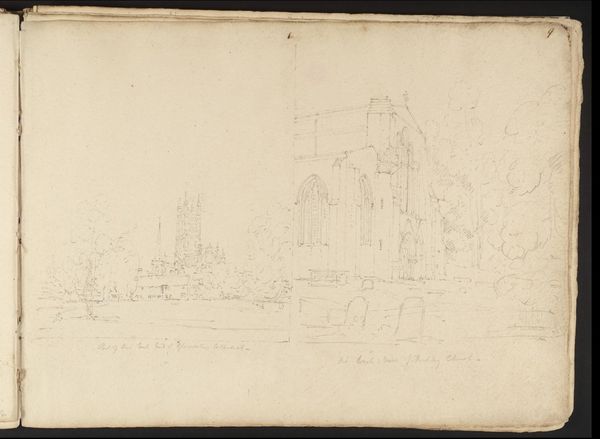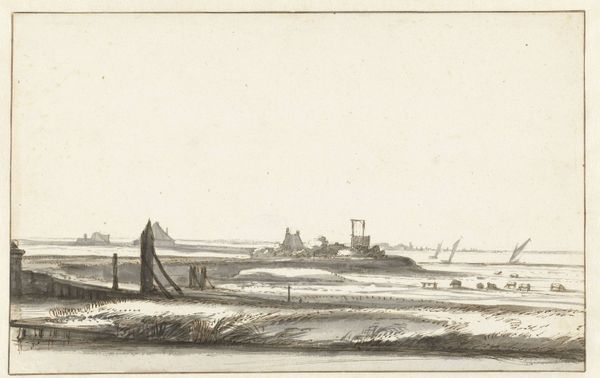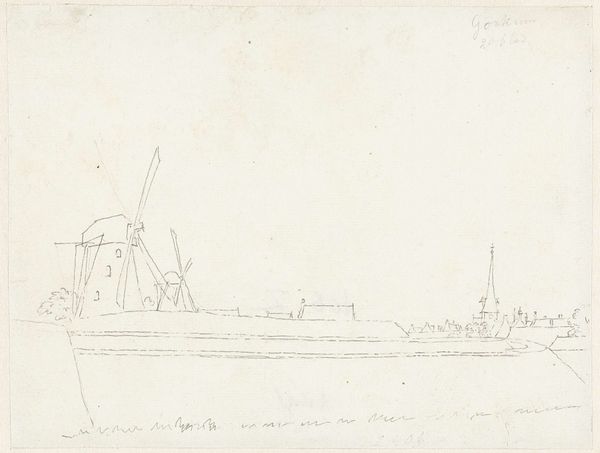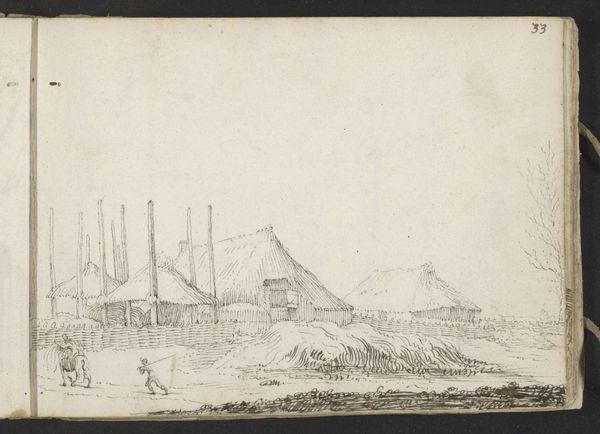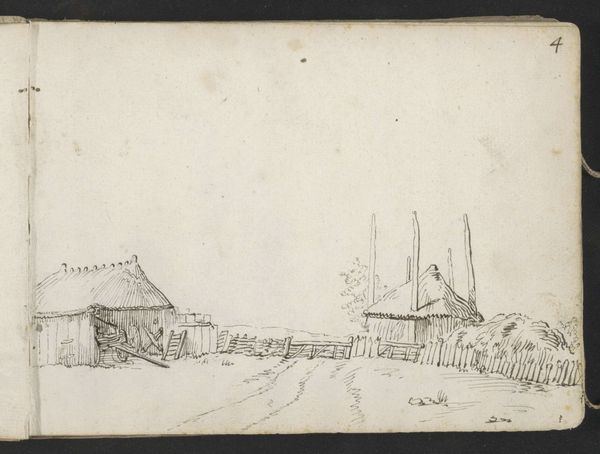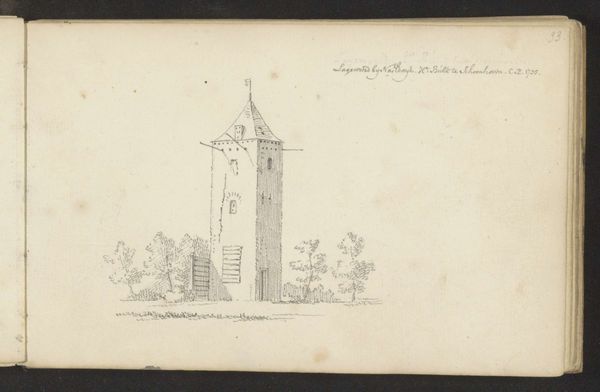
drawing, plein-air, paper, watercolor, ink
#
drawing
#
aged paper
#
toned paper
#
dutch-golden-age
#
plein-air
#
sketch book
#
landscape
#
paper
#
personal sketchbook
#
watercolor
#
ink
#
pen-ink sketch
#
pen work
#
sketchbook drawing
#
watercolour illustration
#
sketchbook art
#
watercolor
Copyright: Rijks Museum: Open Domain
Abraham de Haen the second made this drawing of the Ruïne Observantenklooster outside Emmerik, using pen in gray ink, and brush in gray watercolor. The choice of these materials is revealing. De Haen wasn't making a grand statement in oils, but a portable, accessible record of a place and time. The gray ink and watercolor give the scene a muted, almost melancholic feel, perfectly capturing the ruinous state of the monastery. It's a direct, unvarnished look at history. The artist's hand is evident in the quick, assured lines, and the soft washes of color suggest a fleeting moment captured on paper. Consider the labor involved: from grinding pigments to preparing the paper, and the time it took to build the monastery represented here. De Haen's sketch is a reminder that even in decay, the traces of human effort remain visible. It invites us to consider the relationship between creation, destruction, and the ongoing process of making and unmaking our world.
Comments
No comments
Be the first to comment and join the conversation on the ultimate creative platform.

